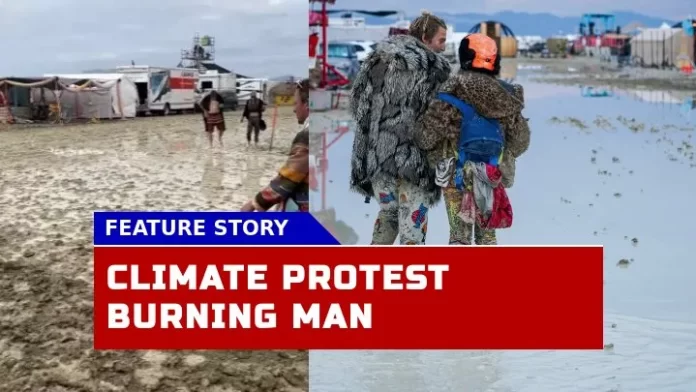The Burning Man Festival is an annual event that attracts tens of thousands of participants to the remote Black Rock Desert in Nevada, USA. Born out of a countercultural movement in the 1980s, Burning Man has grown into a global phenomenon that combines art, self-expression, and community. While it has become a symbol of creativity and radical self-reliance, it also raises questions about its environmental impact and contribution to climate change. In this journal, we will explore the origins of Burning Man, its environmental practices, and its potential effects on the climate.
Origins of Burning Man
Burning Man originated in 1986 when Larry Harvey and Jerry James, two friends, built and burned an 8-foot tall wooden effigy on San Francisco’s Baker Beach. This simple act of self-expression soon evolved into an annual event that would eventually outgrow its urban setting. In 1990, the festival relocated to the Black Rock Desert, a remote and harsh environment that has since become its iconic home.
Environmental Practices
The Black Rock Desert, with its extreme temperatures and arid conditions, poses unique challenges for an event like Burning Man. To minimize its environmental impact, the festival has implemented several sustainability initiatives:
Leave No Trace: Burning Man’s core principle of “Leave No Trace” encourages participants to clean up after themselves, ensuring that the desert is left as pristine as possible. This includes removing every trace of the event, from moop (matter out of place) to art installations.
Solar Power: Many theme camps and art installations use solar power to reduce reliance on fossil fuels and generators. Solar panels are a common sight on the playa.
Transportation: Burning Man promotes carpooling and ride-sharing to reduce the number of vehicles traveling to the event. Some participants even opt for bicycles as their primary mode of transportation within the festival.
Artistic Sustainability: Artistic creations at Burning Man often involve the use of recycled or repurposed materials, contributing to a culture of sustainability and reuse.
Green Camps: Some theme camps and villages prioritize eco-friendly practices, including composting, graywater management, and sustainable building techniques.
While these efforts demonstrate a commitment to reducing its environmental footprint, the sheer scale of Burning Man, with its temporary city of over 70,000 participants, still has consequences for the environment.
Climate Impact
Burning Man’s impact on the climate extends beyond its environmental practices, and several factors should be considered:
Transportation: The majority of participants travel long distances to reach the festival, often using fossil fuels. The carbon emissions from these journeys contribute to the festival’s carbon footprint.
Energy Consumption: Despite efforts to use solar power, the festival’s temporary infrastructure, including lighting and sound systems, still relies on generators and other sources of energy, which produce greenhouse gas emissions.
Waste Generation: While Burning Man promotes a “Leave No Trace” ethos, waste is inevitably generated during the event, which may not be entirely mitigated through cleanup efforts.
Art Installations: The burning of large art installations, including the iconic “Man” effigy and the Temple, releases particulate matter and carbon emissions into the atmosphere.
Temporary City: The construction and dismantling of the temporary city require significant resources and energy, contributing to the festival’s overall carbon footprint.
Burning Man is a remarkable cultural phenomenon that celebrates self-expression, community, and creativity. While it has made strides in adopting sustainable practices and minimizing its environmental impact, it remains a complex event with both positive and negative effects on the climate. As it continues to evolve and adapt, Burning Man serves as a fascinating case study of how large-scale gatherings can navigate the delicate balance between artistic expression and environmental responsibility. As participants and organizers explore ways to reduce the festival’s climate impact, it offers valuable lessons for other events striving to become more sustainable in an era of climate change awareness.
Disclaimer: The thoughts and opinions stated in this article are solely those of the author and do not necessarily reflect the views or positions of any entities represented and we recommend referring to more recent and reliable sources for up-to-date information.









